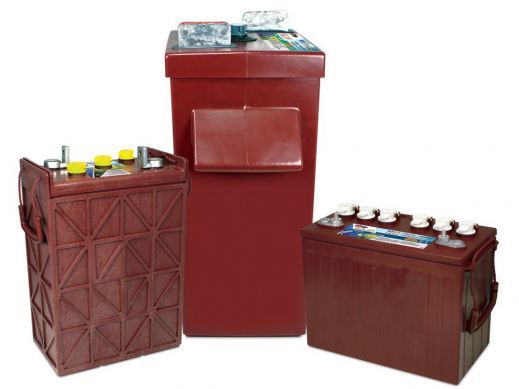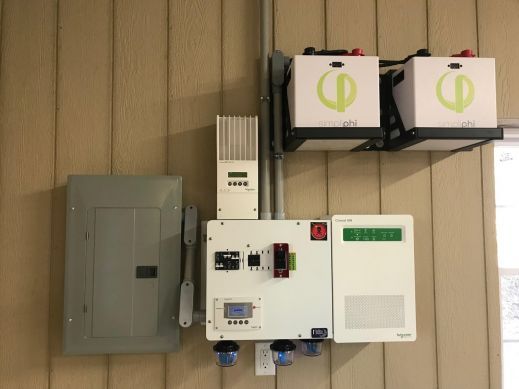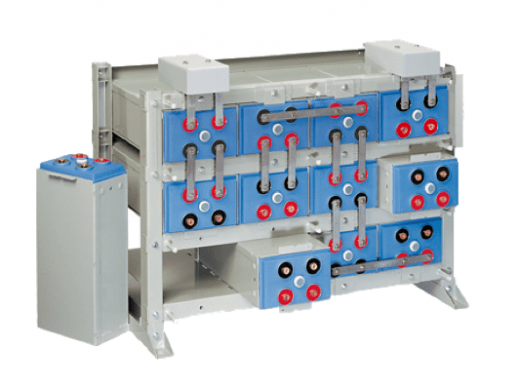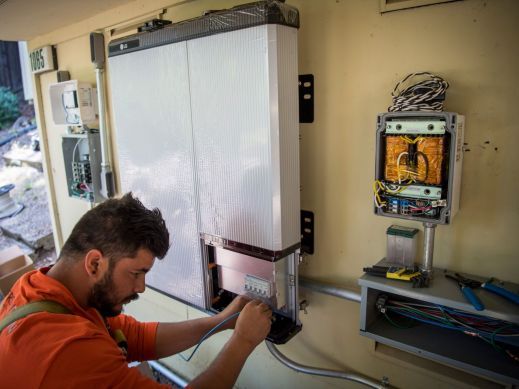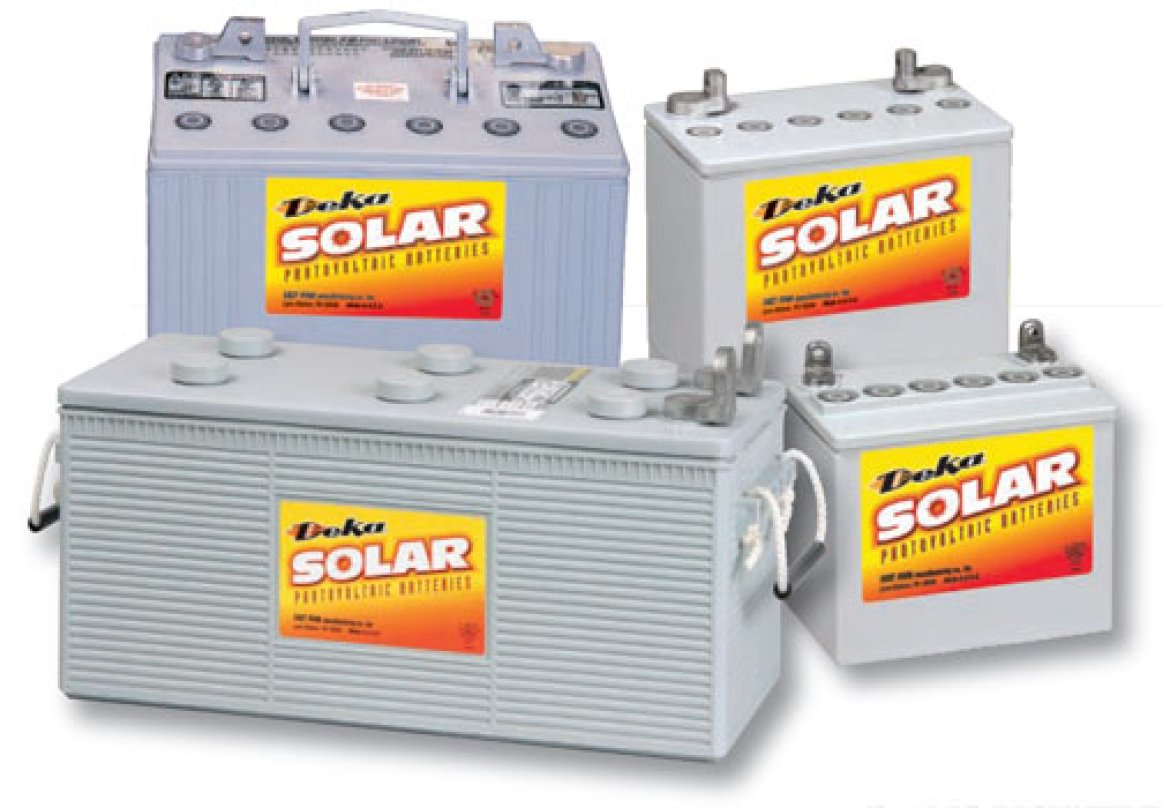
Types of Lead Acid Batteries (Wet / AGM / Gel)
Wet (aka Flooded)
Wet batteries are generally less expensive than the two other main types, AGM and Gel. A well-maintained wet battery can have a longer lifespan than AGM and Gel. However, wet batteries require regular maintenance (such as watering or equalization) which is not required by AGM and Gel. A wet battery that is not well maintained can have a very short lifespan. For that reason, AGM and Gel are typically used more frequently in solar applications than wet.
Wet batteries are also considered hazardous by shipping carriers. They need to be labeled as such and have a higher shipping cost than AGM and Gel.
A listing of wet batteries available from our friends at MK Deka is accessible here.
Sealed Lead Acid (AGM and Gel)
Unlike wet batteries, AGM and Gel batteries do not require equalization. While these batteries are more expensive than wet units, they are more commonly used in solar applications than wet batteries due in large part to being maintenance free.
Unlike wet batteries, AGM and Gel units are not considered hazardous, and therefore do not need to be labeled as such or incur additional shipping fees.
Gel batteries tend to be somewhat more expensive than AGM units, but also tend to last somewhat longer. For this reason we generally recommend Gel batteries for 100% off grid installations, as Gel is best suited for the daily cycling of the batteries found in these applications. AGM is a good choice for grid tied systems with battery backup. The batteries won’t be cycled through as much as an off grid system, so the slightly lower life expectancy can be outweighed by the slightly lower cost. However, these are not hard and fast rules and either battery type is acceptable for use in off grid or battery backup systems.
Check our listings for Deka’s line of AGM and Gel batteries!
Lithium Ion
Lithium Ion batteries have many advantages over lead acid batteries. Lithium Ion batteries can be discharged to either 100% depth of discharge (DoD) or near to it, are physically much smaller and lighter than lead acid batteries, and generally will last longer. Many Lithium Ion units (such as LG Chem's Lithium Ion Unit) offer easy expandability as the end user seeks to increase storage capacity.
The main disadvantage of Lithium Ion historically has been a significantly higher price compared to lead acid. However, the pricing of Lithium Ion has dropped such that it is increasingly becoming competitive with lead acid. At the same time, the price of lead is generally increasing, contributing to an increase in the cost lead acid batteries.
Terminology
Depth of Discharge
A 30% depth of discharge (DoD) means that up to 30% of the battery will be discharged and 70% of the battery charge will remain. The smaller the depth of discharge, the longer the batteries will last. For example, a 10% maximum depth of discharge on a battery bank will allow the batteries to last much longer compared to a depth of discharge of 20%. However, in order to supply the same capacity, the 10% DoD battery bank needs to be twice as large as the 20% DoD battery bank.
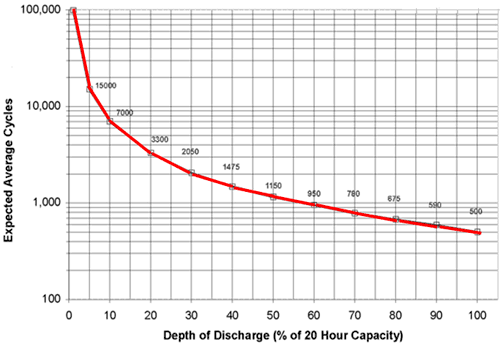
While the standard depth of discharge is generally between 30-50%, the standard Greentech Renewables recommended DoD is 30% (although 50% is still acceptable).
Note: Automotive batteries are not recommended for use in solar applications. Car batteries are designed for “quick start” applications (meaning that a large amount of power is needed initially and then it drops off after that). Solar applications require “deep cycle” batteries (meaning that the battery is slowly cycled down from full capacity to the max DoD).
Max Number of Strings
It is generally recommended to not exceed 4 battery strings in parallel in a given PV application. Under no circumstances should a battery bank have more than 5 strings (4 or fewer is ideal).
System Voltage
When deciding what system voltage (12V, 24V, 48V) is best for a given battery bank, a very rough rule of thumb is as follows:
System size of 500W or less: 12VDC battery bank
System size of 500W-1000W: 12V or 24V battery bank
System size of 1000W-4000W: 24V or 48V battery bank
System size of 4000W or more: 48V battery bank
